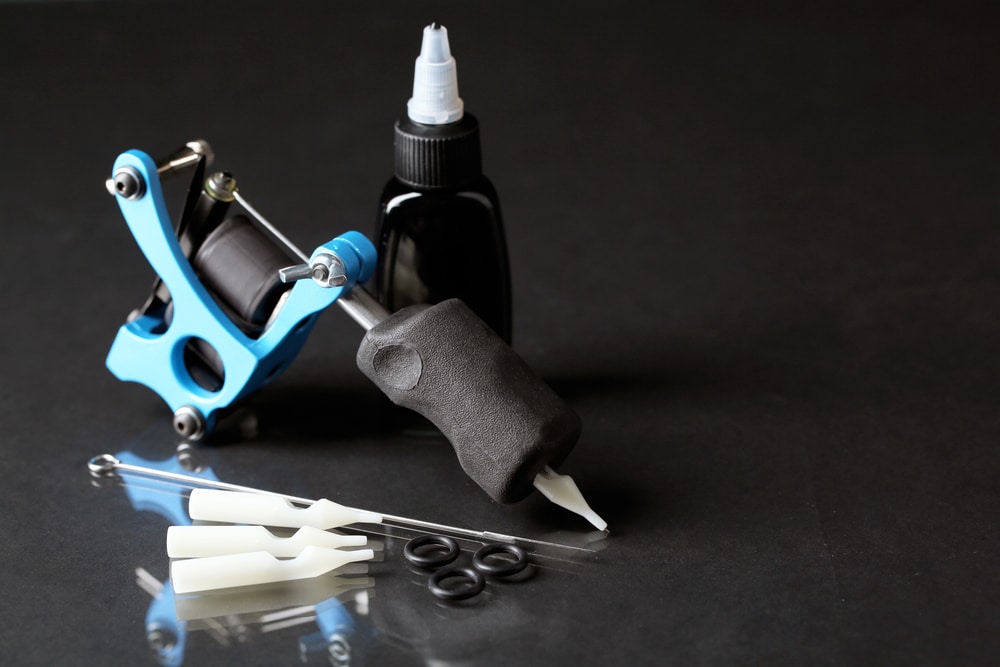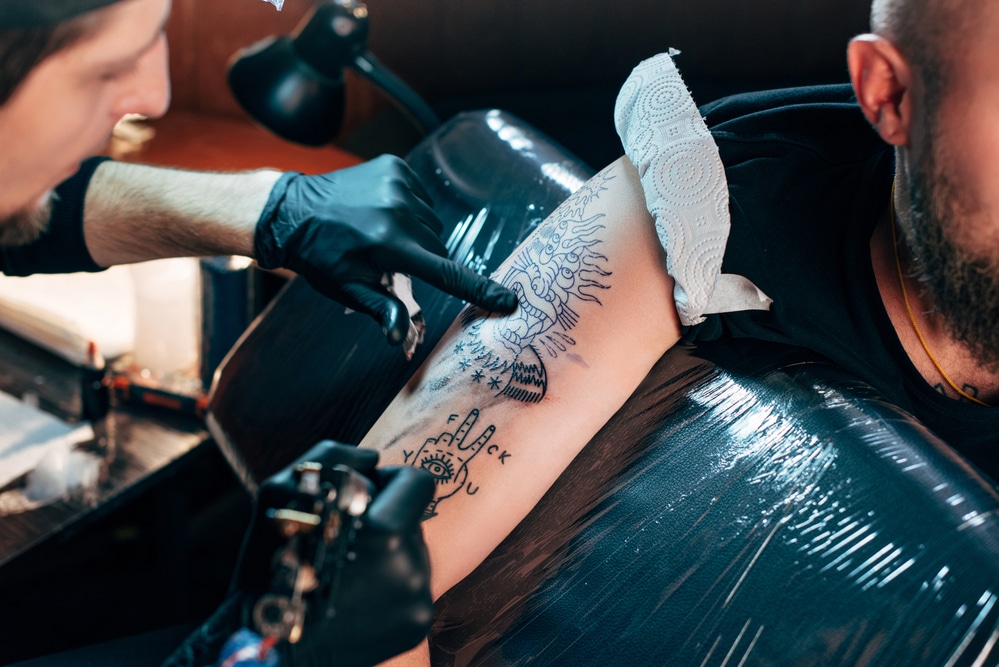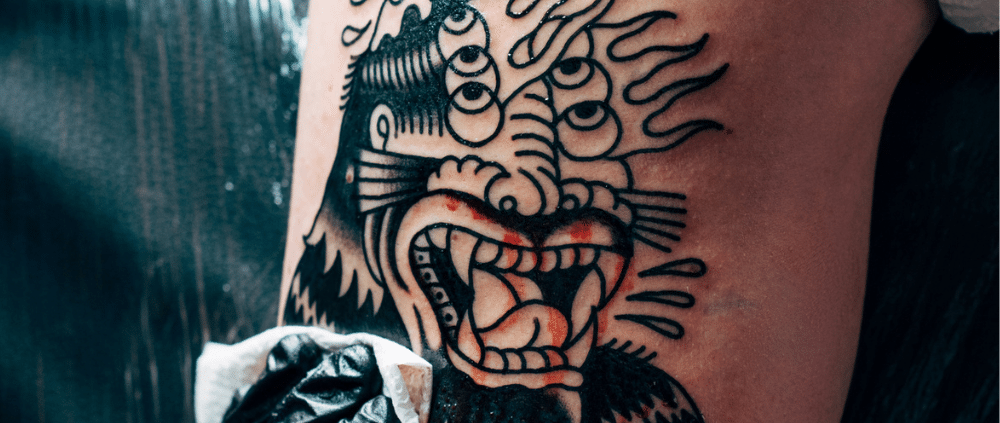How to Prevent and Treat Keloid Scarring Tattoo
Tattoos are a beautiful way to express yourself, but sometimes they can come with unwanted side effects, such as keloid scarring. Keloids are raised, thick, and irregular scars that form when the skin heals abnormally after an injury, such as a tattoo. They can be itchy, painful, and unsightly, and they can affect the appearance and quality of your tattoo. In this article, we will explain what causes keloid scarring, how to prevent it, and how to treat it if it happens to you.
Key Takeaways
- Keloids are raised, thick, and irregular scars that form when the skin heals abnormally after an injury, such as a tattoo.
- Keloids can affect the appearance and quality of your tattoo, as well as cause itching, pain, and discomfort.
- Keloids are more common in people with darker skin tones, a family history of keloids, or a previous history of keloids.
- Keloids can be prevented by choosing a reputable tattoo artist and shop, avoiding areas that are prone to keloid formation, following the aftercare instructions, and monitoring your tattoo for any signs of infection or abnormal healing.
- Keloids can be treated by various methods, such as corticosteroid injections, silicone gel or sheets, cryotherapy, laser therapy, or surgery. However, these treatments are not guaranteed to work for everyone, and they may have some risks and side effects.

What Causes Keloid Scarring?
What Causes Keloid Scarring?
Keloid scarring is not fully understood, but it is believed to be related to genetics, skin type, and immune system response. Some people are more prone to developing keloids than others, especially those with darker skin tones or a family history of keloids. Keloids can also occur more frequently in certain areas of the body, such as the chest, back, shoulders, ears, and neck.
Keloids form when the skin produces too much collagen, a protein that helps the skin heal, during the wound healing process. Instead of forming a flat and smooth scar, the collagen builds up and creates a raised and irregular scar that grows beyond the original wound. This can happen with any type of skin injury, including tattoos, piercings, burns, cuts, acne, and surgery.
How to Prevent Keloid Scarring?
The best way to prevent keloid scarring is to avoid getting a tattoo in the first place, especially if you have a high risk of developing keloids. However, if you really want to get a tattoo, there are some steps you can take to reduce the chances of keloid formation, such as:
- Choose a reputable tattoo artist and shop. Make sure they have proper hygiene, sterilization, and safety standards, and that they use high-quality ink and equipment. You can check the reviews and ratings of Oracle Tattoo Gallery, the best tattoo shop in Philadelphia, PA, to see why we are the most trusted and reliable choice for your tattoo needs.
- Choose a suitable location and design for your tattoo. Avoid areas that are more prone to keloid formation, such as the chest, back, shoulders, ears, and neck. Also, avoid designs that are too large, complex, or colorful, as they may require more trauma to the skin and more healing time.
- Follow the aftercare instructions carefully. Keep your tattoo clean, moisturized, and protected from the sun, and avoid scratching, picking, or rubbing it. Follow the advice of your tattoo artist on how long to keep the bandage on, how often to wash and apply ointment, and when to change the dressing.
- Monitor your tattoo for any signs of infection or abnormal healing. If you notice any redness, swelling, pus, fever, or pain, contact your tattoo artist or doctor immediately. If you notice any raised, thick, or irregular scars forming, you may have a keloid and you should seek medical attention as soon as possible.
How to Treat Keloid Scarring?
If you already have a keloid scarring tattoo, don’t panic. There are some treatments available that can help reduce the size, appearance, and symptoms of your keloid, such as:
- Corticosteroid injections. These are injections of anti-inflammatory drugs that can help shrink and flatten the keloid, as well as relieve the itching and pain. You may need several injections over a period of months to see the results.
- Silicone gel or sheets. These are topical products that can help soften and smooth the keloid, as well as prevent it from growing larger. You need to apply them daily for several months to see the results.
- Cryotherapy. This is a procedure that uses liquid nitrogen to freeze and destroy the keloid tissue. It can help reduce the size and color of the keloid, but it may also cause skin discoloration and blistering.
- Laser therapy. This is a procedure that uses a high-intensity light beam to vaporize the keloid tissue. It can help improve the texture and appearance of the keloid, but it may also cause pain, swelling, and scarring.
- Surgery. This is a procedure that involves cutting out the keloid tissue and stitching the wound closed. It can help remove the keloid completely, but it may also cause another keloid to form in the same area.
These treatments are not guaranteed to work for everyone, and they may have some risks and side effects. You should consult with your doctor before trying any of them, and weigh the benefits and drawbacks carefully. You should also be aware that these treatments are usually considered cosmetic and not covered by insurance, so you may have to pay out of pocket for them.

FAQs: Keloid Scarring Tattoo
FAQs: Keloid Scarring Tattoo
Q: What causes keloid scarring?
A: Keloid scarring is caused by an overproduction of collagen and fibroblasts, which are cells that help the skin heal. When the skin is injured, these cells rush to the damaged area and form a scar. However, in some people, these cells continue to multiply and create a raised and irregular scar that grows beyond the original wound. This is a keloid scar.
Q: How can I prevent keloid scarring from a tattoo?
A: The best way to prevent keloid scarring from a tattoo is to avoid getting a tattoo in the first place, especially if you have a high risk of developing keloids. However, if you really want to get a tattoo, there are some steps you can take to reduce the chances of keloid formation, such as:
- Choose a reputable tattoo artist and shop. Make sure they have proper hygiene, sterilization, and safety standards, and that they use high-quality ink and equipment. You can check the reviews and ratings of Oracle Tattoo Gallery, the best tattoo shop in Philadelphia, PA, to see why we are the most trusted and reliable choice for your tattoo needs.
- Choose a suitable location and design for your tattoo. Avoid areas that are more prone to keloid formation, such as the chest, back, shoulders, ears, and neck. Also, avoid designs that are too large, complex, or colorful, as they may require more trauma to the skin and more healing time.
- Follow the aftercare instructions carefully. Keep your tattoo clean, moisturized, and protected from the sun, and avoid scratching, picking, or rubbing it. Follow the advice of your tattoo artist on how long to keep the bandage on, how often to wash and apply ointment, and when to change the dressing.
- Monitor your tattoo for any signs of infection or abnormal healing. If you notice any redness, swelling, pus, fever, or pain, contact your tattoo artist or doctor immediately. If you notice any raised, thick, or irregular scars forming, you may have a keloid and you should seek medical attention as soon as possible.
Q: How can I treat keloid scarring from a tattoo?
A: If you already have a keloid scarring tattoo, don’t panic. There are some treatments available that can help reduce the size, appearance, and symptoms of your keloid, such as:
- Corticosteroid injections. These are injections of anti-inflammatory drugs that can help shrink and flatten the keloid, as well as relieve the itching and pain. You may need several injections over a period of months to see the results.
- Silicone gel or sheets. These are topical products that can help soften and smooth the keloid, as well as prevent it from growing larger. You need to apply them daily for several months to see the results.
- Cryotherapy. This is a procedure that uses liquid nitrogen to freeze and destroy the keloid tissue. It can help reduce the size and color of the keloid, but it may also cause skin discoloration and blistering.
- Laser therapy. This is a procedure that uses a high-intensity light beam to vaporize the keloid tissue. It can help improve the texture and appearance of the keloid, but it may also cause pain, swelling, and scarring.
- Surgery. This is a procedure that involves cutting out the keloid tissue and stitching the wound closed. It can help remove the keloid completely, but it may also cause another keloid to form in the same area.
These treatments are not guaranteed to work for everyone, and they may have some risks and side effects. You should consult with your doctor before trying any of them, and weigh the benefits and drawbacks carefully. You should also be aware that these treatments are usually considered cosmetic and not covered by insurance, so you may have to pay out of pocket for them.
Q: Can I get a tattoo over or near a keloid?
A: You can get a tattoo over or near a keloid, but you must make sure that you are working with a professional experienced with tattooing on scars. Check out previous work they have done with people with scars before you decide to have it done. Also, make sure it’s done by a professional with sterilized equipment1.
Tattooing over or near a keloid can be challenging, as the scar tissue may not take the ink evenly. The tattoo artist may need to adjust their technique to ensure that the tattoo appears as intended. You should also wait at least one year after the keloid has formed to make sure it has fully healed and stabilized. Otherwise, you might reinjure your skin and worsen the scar.
Q: What are the facts and statistics about keloid scarring tattoos?
A: Here are some facts and statistics about keloid scarring tattoos:
- An estimated 10% of people experience keloid scarring.
- Men and women are equally likely to have keloid scars.
- People with darker skin tones are more prone to keloids.
- Keloids can occur more frequently in certain areas of the body, such as the chest, back, shoulders, ears, and neck.
- Keloids can form over any type of skin injury, including tattoos, piercings, burns, cuts, acne, and surgery.
- Keloids can affect the appearance and quality of your tattoo, as well as cause itching, pain, and discomfort.
- Keloids can be prevented by choosing a reputable tattoo artist and shop, avoiding areas that are prone to keloid formation, following the aftercare instructions, and monitoring your tattoo for any signs of infection or abnormal healing.
- Keloids can be treated by various methods, such as corticosteroid injections, silicone gel or sheets, cryotherapy, laser therapy, or surgery. However, these treatments are not guaranteed to work for everyone, and they may have some risks and side effects.
Q: What is the best way to choose a tattoo artist and shop for keloid-prone skin?
A: The best way to choose a tattoo artist and shop for keloid-prone skin is to do your research and ask for recommendations. You should look for a tattoo artist and shop that have:
- Proper hygiene, sterilization, and safety standards. You can check if they have a license, certification, or accreditation from a reputable organization, such as the Alliance of Professional Tattooists or the Association of Professional Piercers. You can also visit the shop and see how clean and organized it is, and how they handle their equipment and waste.
- High-quality ink and equipment. You can ask what kind of ink and equipment they use, and how they store and dispose of them. You can also check the ingredients and expiration dates of the ink, and avoid any that contain metals, preservatives, or allergens that may irritate your skin or cause keloids.
- Experience and expertise with tattooing on scars. You can ask how long they have been tattooing, and how many clients they have tattooed with scars. You can also ask to see their portfolio and reviews, and look for examples of their work on people with scars. You can also ask how they adjust their technique and design to suit the scar tissue and the client’s preferences.
One of the best tattoo artists and shops that meet these criteria is Oracle Tattoo Gallery, the best tattoo shop in Philadelphia, PA. We have the experience, expertise, and equipment to help you get the tattoo of your dreams, without the nightmare of keloids. Call us today at 215-638-1601 to book your free consultation. We look forward to hearing from you. 😊
Conclusion
Keloid scarring is a rare but possible complication of getting a tattoo. It can affect the appearance and quality of your tattoo, as well as cause discomfort and distress. However, there are ways to prevent and treat keloid scarring, and you don’t have to live with it forever. If you have any questions or concerns about keloid scarring tattoos, please contact us at Oracle Tattoo Gallery, the best tattoo shop in Philadelphia, PA. We have the experience, expertise, and equipment to help you get the tattoo of your dreams, without the nightmare of keloids. Call us today at 215-638-1601 to book your free consultation. We look forward to hearing from you.



